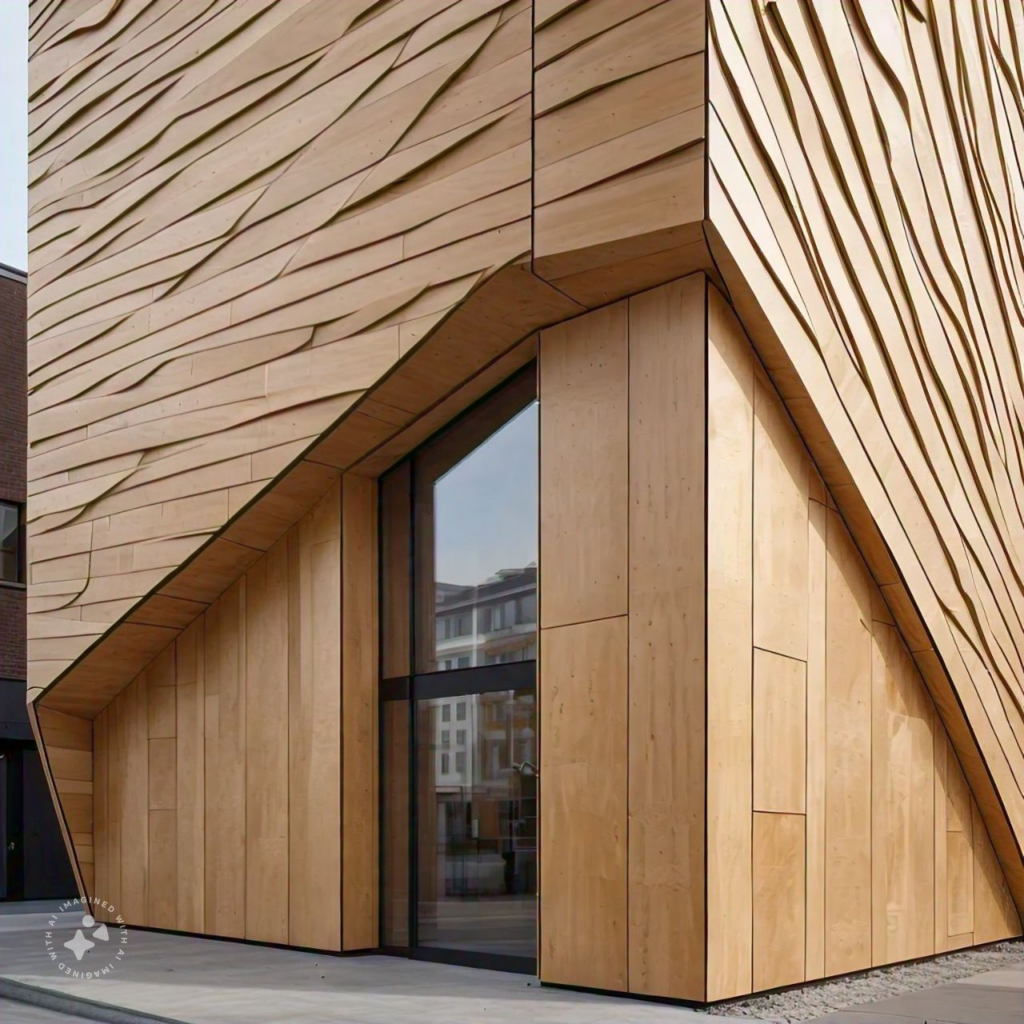
Plywood has long been a staple in construction and furniture making, but its potential in modern architecture is only beginning to be fully realized. This versatile material has evolved from simple utility to a key player in innovative architectural designs. In this blog, we will explore the innovative uses of plywood in contemporary architecture, showcasing its versatility, sustainability, and aesthetic appeal.
What is Plywood?
Plywood is an engineered wood product made from thin layers of wood veneer that are glued together. This process enhances its strength and durability compared to traditional solid wood. The unique properties of plywood, such as its lightweight nature and resistance to warping, make it an ideal choice for a variety of architectural applications.
Innovative Applications of Plywood
Plywood’s adaptability allows architects and designers to explore creative uses beyond conventional applications. Here are some notable examples:
- Structural Elements: Plywood is increasingly being used as a structural material in buildings. Its high strength-to-weight ratio makes it suitable for constructing walls, roofs, and flooring systems. Engineered products like Cross-Laminated Timber (CLT) utilize plywood’s properties to create robust structures that can support significant loads while minimizing environmental impact.
- Curved Forms: The flexibility of plywood allows for the creation of complex shapes and forms in architecture. By laminating thin sheets of plywood and applying heat or pressure, architects can design curved walls and ceilings that add visual interest to spaces. This capability is particularly valuable in modern designs that favor organic shapes over rigid lines.
- Cladding and Facades: Plywood is becoming a popular choice for exterior cladding due to its aesthetic appeal and versatility. It can be treated with various finishes to enhance durability against weather conditions while providing a warm, natural look. Architects are using plywood panels in innovative patterns and orientations to create striking facades that stand out.
- Interior Design: The warm tones and textures of plywood make it an excellent choice for interior finishes. From wall paneling to custom furniture pieces, plywood adds character to residential and commercial spaces alike. Designers are leveraging techniques like CNC milling and laser cutting to create intricate designs that highlight the material’s beauty.
- Prefabrication: The rise of prefabricated construction methods has positioned plywood as a key component in modular building systems. Plywood panels can be manufactured off-site and assembled quickly on location, reducing construction time and labor costs. This approach not only streamlines the building process but also promotes sustainability by minimizing waste.
Sustainability Aspects
As environmental concerns grow, the sustainable attributes of plywood are gaining attention. Made from rapidly renewable resources, plywood can be sourced from sustainably managed forests, making it an eco-friendly alternative to other building materials. Additionally, its manufacturing process generates less waste compared to solid wood products, further enhancing its appeal in sustainable architecture.
Conclusion
The innovative uses of plywood in modern architecture illustrate its remarkable versatility and adaptability as a building material. From structural applications and aesthetic cladding to sustainable practices in prefabrication, plywood is reshaping how we think about design and construction. As architects continue to push boundaries with this material, we can expect to see even more creative applications that highlight its potential.
Incorporating plywood architecture into your next project not only enhances aesthetic value but also contributes positively to sustainability efforts within the industry. As we embrace these innovative uses, plywood will undoubtedly remain a vital element in the future of architectural design.




